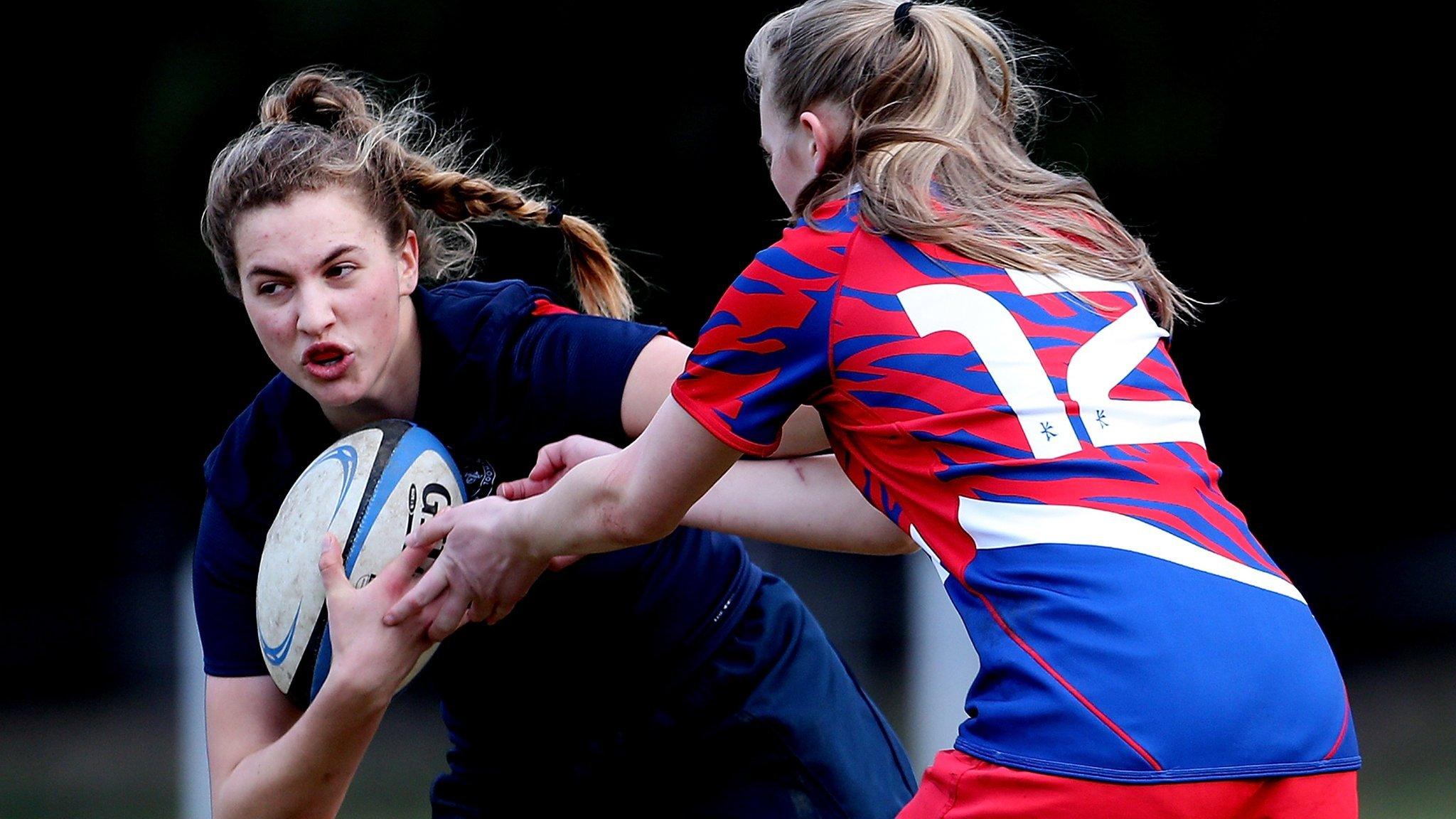James Haskell column: The toe pinged back like broken elastic
- Published
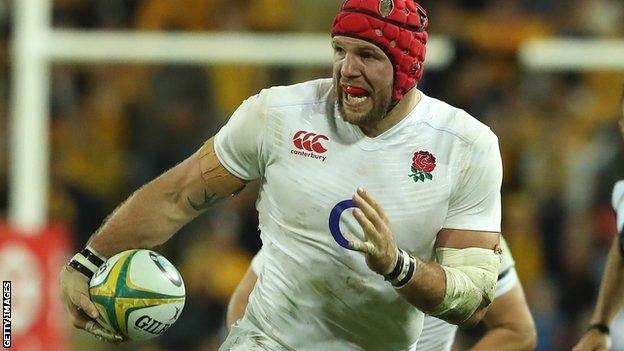
Haskell was man of the series despite playing only the first two Tests in the 3-0 win in Australia
James Haskell was immense as England humbled Australia on home soil in the summer - before his dodgy toe finally gave way after 66 minutes of the second Test.
As he works his way back to fitness after having an operation to rebuild it, the Wasps flanker will write a column for the BBC Sport website. He begins with some insight into his "unique" injury.
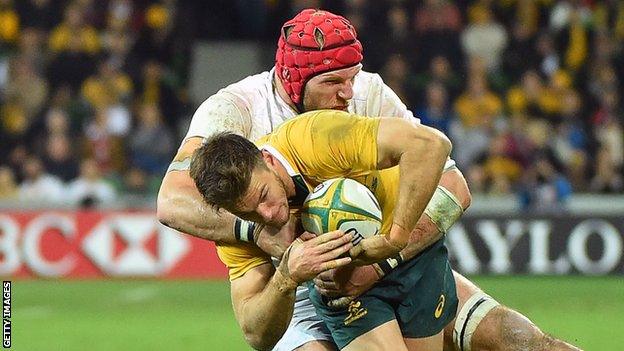
Haskell dominated Australia's back row before the toe injury forced him out of the series
'The surgeon said it was unique'
When I discovered I needed an operation I had a 'head in hands' moment for an hour but talked to my girlfriend and parents and got to grips with it.
I went on holiday a couple of days later and had a fantastic two weeks in Ibiza, but I knew I needed the operation because every time I got out of the pool and walked around - or, rather, hobbled around - I would only see four wet toe prints on the floor.
There was one missing because the big toe was up in the air, so it was obviously time to get it sorted out.
I had the operation when I got back and things have been going really well.
When I saw the surgeon the other day for the first time since the operation, he was very pleased with how it looks - apparently it is way better than he thought it might be.
I was concerned when I first saw him because he used words like "unique" and said things like "we don't get to see a lot of this".
I had visions of him putting an instruction manual on my forehead during the operation as he tried to figure out what to do, but he's the best surgeon in the game and I am very pleased with the results.
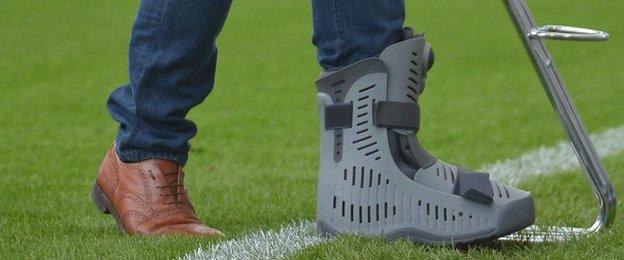
Haskell had to wear a protective boot at Wasps' win over Exeter on Sunday
What exactly is the injury?
I broke a sesamoid bone, which is a small bone connected to different tendons, external in the foot.
When it broke it pinged back like elastic and damaged the plantar plate, which is a pulley system that runs around your foot to operate the big toe. It meant I had no ability to push off.
I played the last five or six games of the season with anaesthetic in my foot for pain management and it was fine for me to carry on.
But there was always a risk it could make it worse and in the 66th minute of the second Test against Australia, it did.
I thought a stud had gone through the bottom of my boot so I called on the doctor, who brought on another pair of boots, but it turned out it wasn't a stud, it was my toe that had gone.
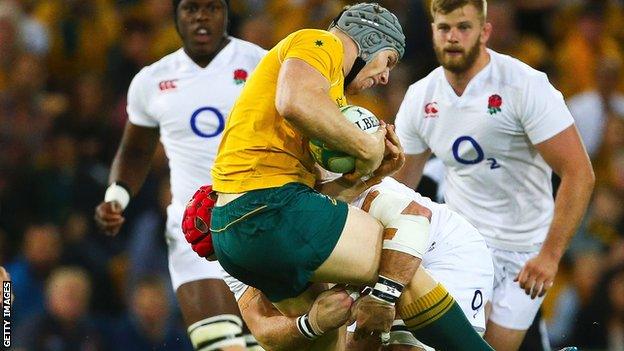
Haskell's thumping tackle on David Pocock set the tone for England down under this summer
What did the operation involve?
My toe has been reconstructed and the main metatarsal and everything else are fine.
A tiny piece of bone was removed, tendons and other bits were reattached, and when everything was in place it was all stitched up.
People jokingly compare me to David Haye (who blamed his defeat by Wladimir Klitschko on a broken toe), but you genuinely can't function without your big toe.
You need it for balance, for power, for running, for footwork, for everything… so it's a bit tricky when it's sticking up in the air.
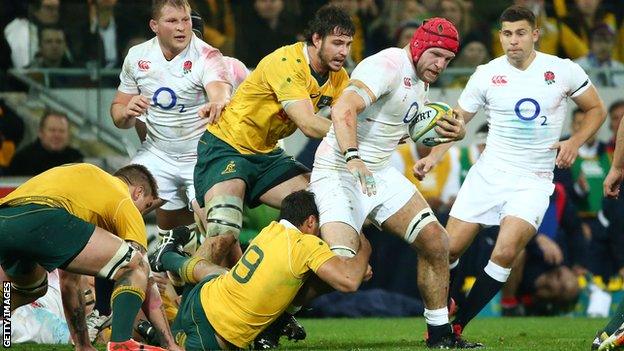
The operation will enable Haskell to carry as effectively as he did in the summer Tests
How are you filling your time?
I have been looked after unbelievably well by my girlfriend.
I have probably not been the easiest person to deal with because I am used to playing and running around, but among all the rehab work I've also thrown myself into loads of other things.
I'm writing another book, I am DJ-ing a bit and there are lots of little things that are bubbling away which means I have always got things to do.
I challenge myself to be the best I can be, and that means being super fit and professional.
How do you deal with setbacks?
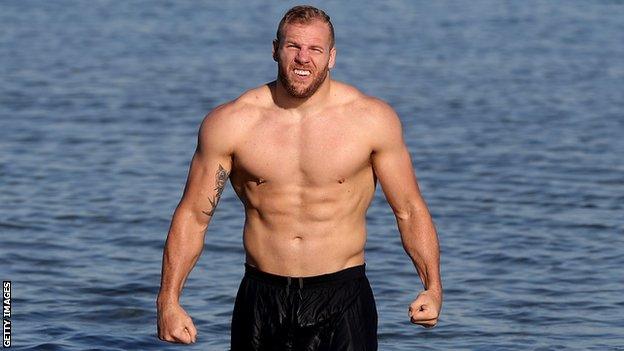
Haskell - here enduring a chilly recovery session in the sea - wants to come back "fitter, more powerful, with better mobility and better footwork"
The key is to see it as an opportunity.
You need to tell yourself you are coming back better than you were before and use whatever it is that has affected you as a catalyst to try something new - you can always find some way to see it as a positive.
When I got injured I allowed myself a few hours to be down about it, then refocussed.
I set some goals. I want to come back fitter, more powerful, with better mobility, better footwork and better handling. I am loving the challenge.
The Olympics being on helped and every time I go for a training session I imagine I am an Olympic athlete powering through, pushing myself as hard as I can. It has given me a whole new focus to training.
Tears as a 14-year-old
I have learnt how to deal with setbacks. The first major one was not getting into the England Under-16s when I was 14.
I got all the way to the final trial but when I was cut I was devastated and cried.
I come from quite a privileged background and had never really had any disappointments until then, but my old man said you can either forget it and move on, or come back next year and be better and stronger.
A family friend was a personal trainer and while others at school were going out and smoking in the bushes or whatever, I got addicted to the gym.
I have seen a sports psychologist for the last 14 years and am very good at compartmentalising things. It drives my girlfriend mad because I neither get excited nor disappointed by many things.
So what now?

'You get filled in week after week then recover and go around again and again and again'
I have started to put some weight on my foot but I'm still on crutches so won't be back training until the end of November or beginning of December.
I still have to be super careful and sleep with my foot on a pillow. I have been able to use a compex machine to reduce muscle wastage in my quads by electro stimulation.
One good thing is that I am giving my body time to rest. I never normally have that, because for 11 months a year you put your body through the mill.
You have to peak every week, get filled in every week, then recover and go around again and again and again.
It sounds a bit grim when put like that, but I can't wait to start doing it again.
James Haskell was speaking to BBC Sport's James Standley.
- Published12 July 2016
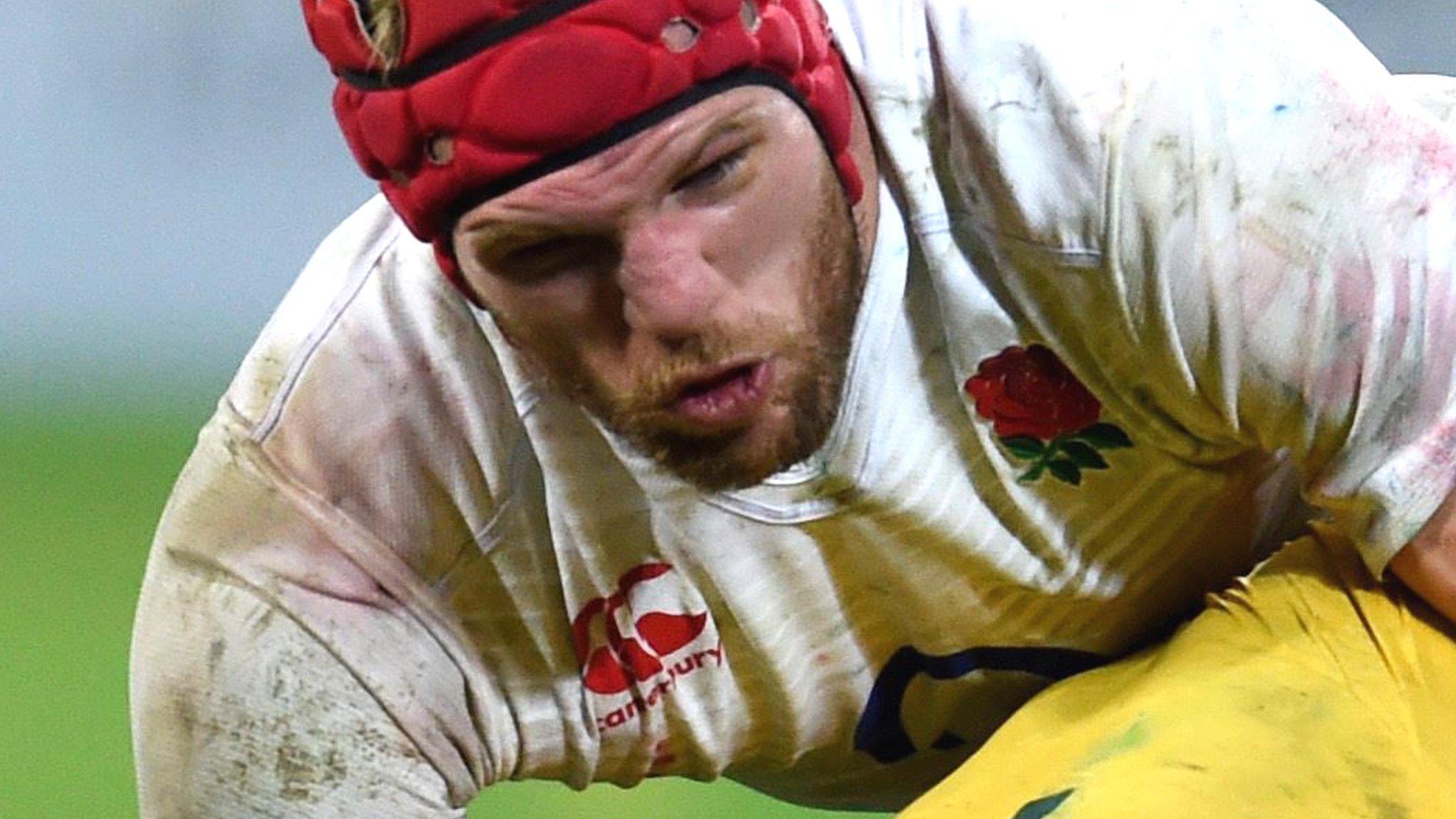
- Published18 June 2016
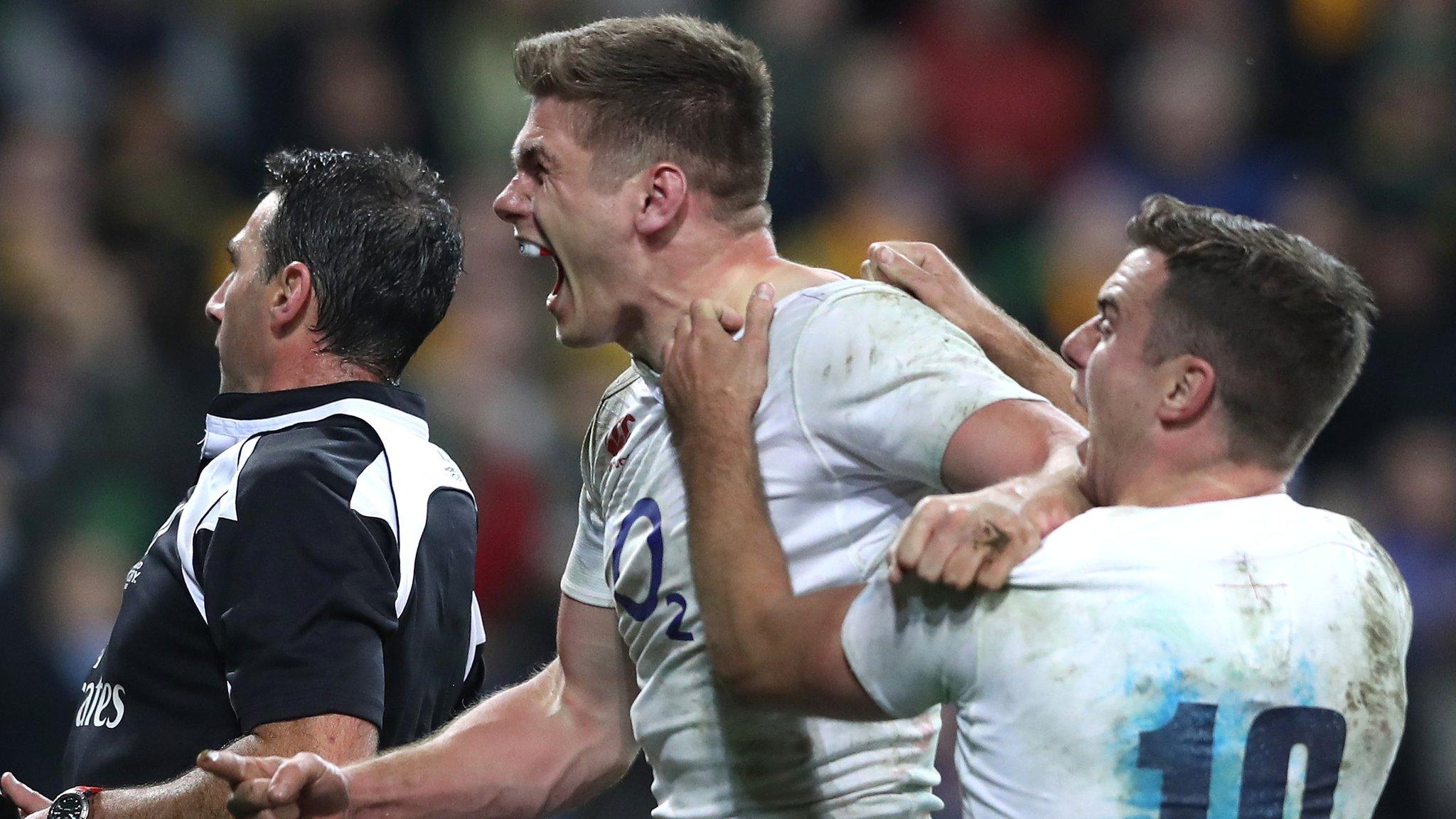
- Published13 May 2016
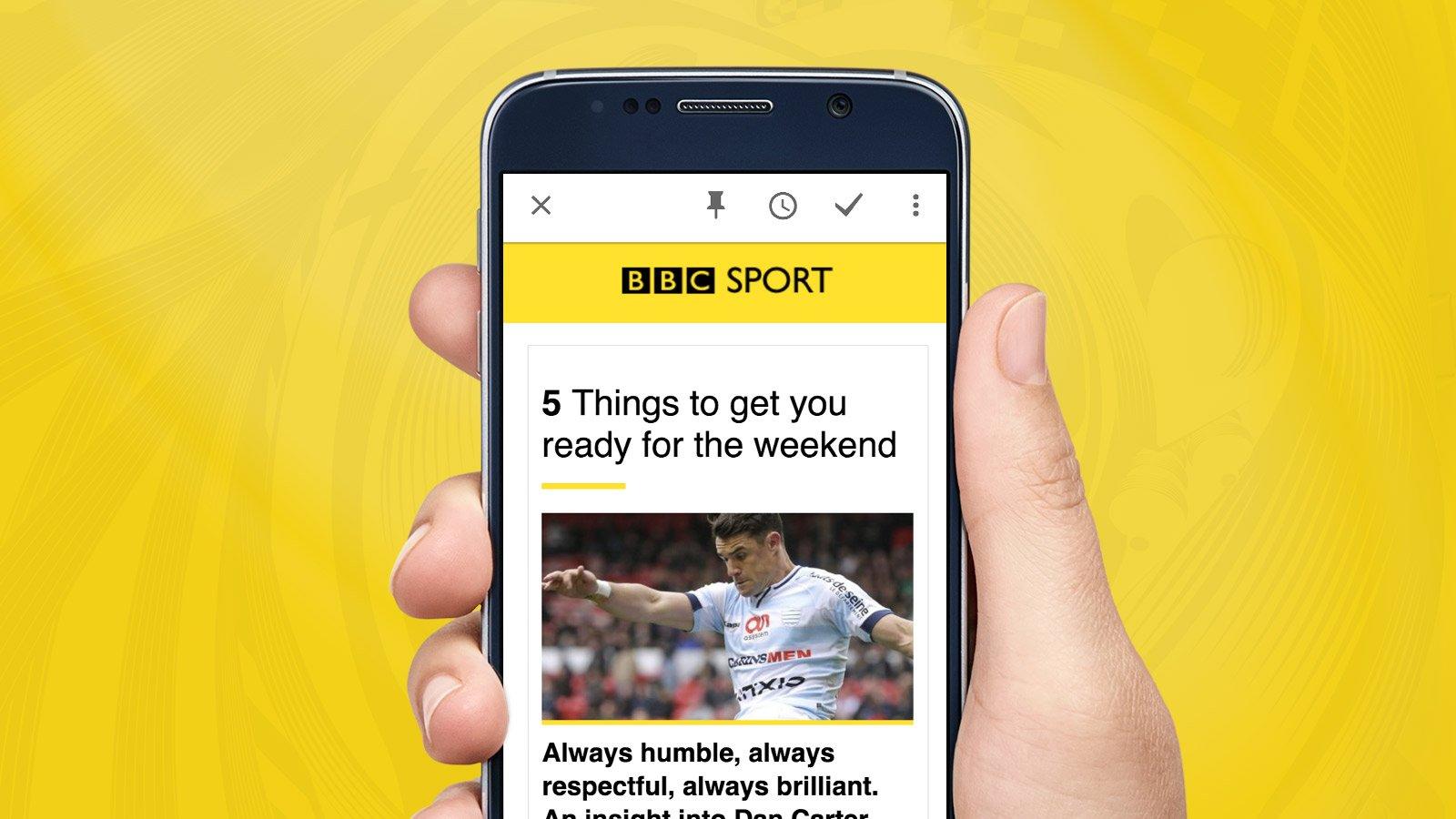
- Published3 February 2017

- Published15 February 2019
